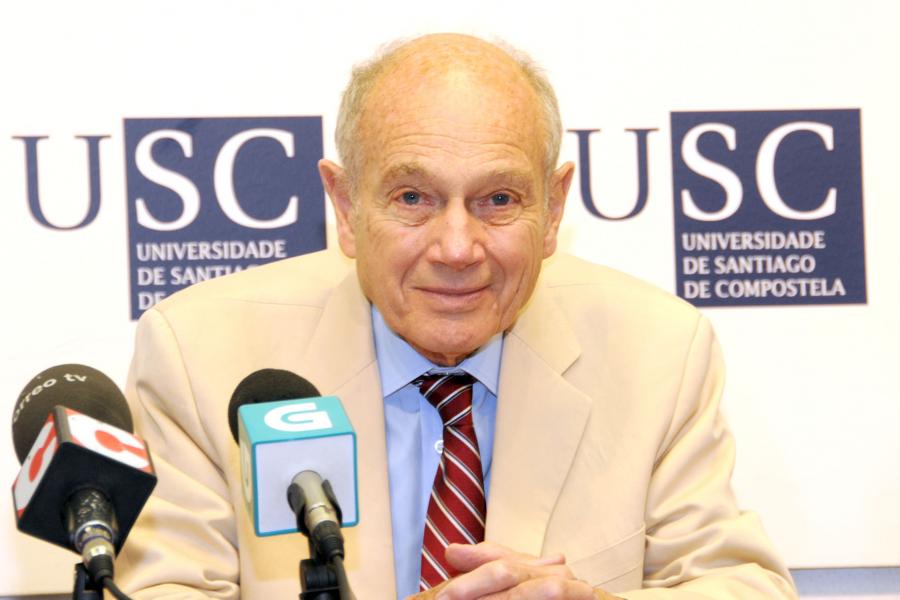
Nobel Prize "for the discovery of violations of fundamental symmetry principles in the decay of neutral K-mesons".
Professor James W. Cronin is a renowned experimentalist who finished his PhD in nuclear research at the University of Chicago in the 1950's.
He returned to the same place as a professor in 1971, after having performed a number of very succesful experiments to study the symmetry between matter and antimatter which lead to the discovery of Charge Conjugation and Parity (CP) violation for which he was awarded the nobel prize in Physics in 1980 together with his colleague Val Fitch.
According to this symmetry matter was expected to behave identically as the mirror image of antimatter, but they discovered that this was not true.
This is a profound discovery that makes absolute differences between matter and antimatter and may explain why the Universe developed in the beginning to contain more matter than antimatter.
He is also widely known for having discovered the "Cronin effect" by which the bonding of nucleons in heavy atoms is shown to affect the interactions at high energies.
After the Nobel award he became interested in Cosmic rays and developed two experiments, The Chicago Air Shower Array to search for high energy gamma rays and the Pierre Auger Observatory, the largest experiment to measure cosmic rays. The construction of the southern site of the Auger Observatory was finished in August 2008 in Argentina after a long effort involving 17 countries and over 400 scientists from 100 institutions including the University of Santiago. Precise measurements of the highest energy cosmic rays have already been made with this detector that covers an area of 3000 km2 in Argentina equivalent to the island of Mallorca.






